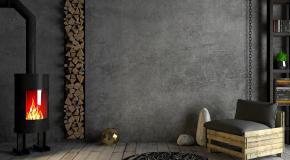Creating a home that looks good and works for you and your family isn’t always easy. Can you stick to a budget? Have you bought the right sized furniture? Does the flow of your space work well?
Knowing what rules to follow and what you should avoid will help you create the home of your dreams, so here are our top five tips to help you avoid any design disasters.
1 Have a plan and stick to your budget
Following a plan will stop you veering off course and ending up with a jumbled space that just doesn’t feel right. Create a mood board to see how your colours and fabrics will work together – check out Pinterest and magazines and print out pictures to help you decide on the look you want. Make sure you’ve considered everything when setting your budget. You don't want to splash out on one or two expensive items and then not have anything left to finish the project. Give yourself a little extra to spend by having a good look at the furniture and accessories you already have to see if anything can be kept or upcycled.
2 Consider your lighting
One light in the middle of the ceiling can either give too much harsh light or not enough! A combination of overhead lighting, wall lights, table and floor lamps gives plenty of choice, whether you want a targeted light for reading, or soft light to highlight paintings or ornaments.
3 Ring the changes
Don’t fall into the trap of thinking everything has to match. Apart from the fact that choosing individual pieces rather than matching sets will make it much easier to change something if you get bored with it, having everything the same lacks personality and interest.
4 Have a focal point
A focal point helps anchor a space and gives the eye somewhere to land when you enter a room. Often, a focal point will be a fireplace or window, but it’s easy to create your own with an accent wall, a striking piece of artwork, oversized pendant light, or large mirror over a console table.
5 The right size rug
The right sized rug can anchor a room, bringing colour and warmth to help pull everything together. Finding the right size isn’t always easy: too small, and it will look lost; too big and it can make a room look crowded. If you have a very large room, choose a statement rug in a size that allows all the legs of the furniture to sit on top of it, with at least 20cm between the back of the furniture and the edge of the rug. If your furniture sits against a wall, choose a rug that will just extend under the front legs. And if your room is small and you don’t want it to look overcrowded, choose a rug that sits under a coffee table in the centre of the room and doesn’t reach as far as your sofas.




